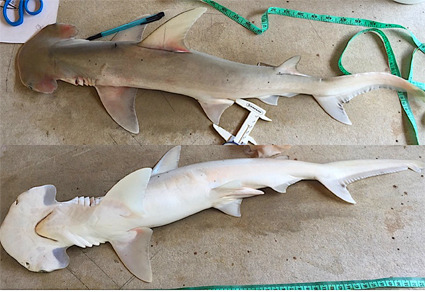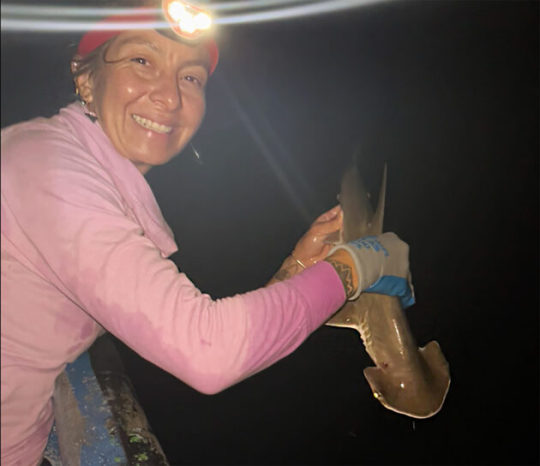#science
Text

Tuscany, Italy 🇮🇹
2K notes
·
View notes
Note
We looked at BLAST in my school today.. felt like seeing a celebrity in the wild. 😭

#asks#anon#science#biology#genetics#BLAST#ive been trying to fall asleep for the past 4 hours. have a funny at my expense
1K notes
·
View notes
Text
We all had fun with geography class now onto science! take this quiz to name as many elements as you can :) [note north american spellings]
obligatory rb for sample size <3
#polls#science#chemistry#periodic table#yes i said i was going to make this like 3 weeks ago and i did i just forgot to actually post it shhhh#im a weirdo who has a decent chunk of the periodic table song memorized so im interested to see how many elements normal people know
823 notes
·
View notes
Text

Comet Tsuchinshan-ATLAS
961 notes
·
View notes
Text

Which crab’s pinch is strong enough to rival a lion’s bite? That would be the coconut crab (Birgus latro). Charles Darwin once described it as growing to “a monstrous size.” This gargantuan crustacean can measure 3 ft (1 m) from leg tip to leg tip and weigh up to 8 lbs (4 kg). A member of the hermit crab family, it uses its powerful claws to crack open coconuts. This species inhabits coasts off of the Indo-Pacific Ocean.
Photo: luca63, CC BY-NC 4.0, iNaturalist
#science#nature#natural history#animals#fact of the day#did you know#cool animals#coconut crab#crabs#crustacean
501 notes
·
View notes
Text

On this September 23, 2024, Cookie wishes you a happy 177th anniversary of the discovery of Neptune by astronomers Urbain Le Verrier, John Couch Adams, and Johann Gottfried Galle (1846)!
#cat#cookie#cats#2024#date#history#cookie wishes you#cute cats#september 23 2024#this day in history#neptune#astronomy#science
563 notes
·
View notes
Text

Headset and gloves for NASA's Virtual Environment Reality Workstation technology, as seen in 1992.
258 notes
·
View notes
Text
Picked up a little resin bee egg case "jar" a few weeks back, and today this chonky little creature emerged. Gave her a sugar snacc and released. Love these sweet little nuggets ❤️




Also see, a relative of resin bees: Dianthidium curvatum, a pebble bee 💛

218 notes
·
View notes
Text

Newest image of Earth and Moon as seen from Space by Japanese satellite - Himawari-8
#astronomy#astronomers#universe#nasa photos#nasa#astrophotography#outer space#astrophysics#nasawebb#hubble space telescope#planet earth#earth#moon#space exploration#space#science#astronaut#eye to the telescope#nasa science#science facts#planetary science#space science#our universe#the universe#nasa jpl#nasa picture of the day#nasa cassi#nasaastronaut#planetary nebula#solar system
167 notes
·
View notes
Text

100 Million Years Ago, Snakes Gained Their Most Iconic Traits
The origin story of snakes is still being pieced together, but researchers are confident that their unique jaws, lack of limbs, and elongated figure all emerged at about the same time.
Snakes seem like relatively simple creatures—basically a glorified sock with holes on either end. Yet, these creatures have managed to adapt to nearly every continent on the planet over the past 100 million years.
But how exactly did snakes evolve, and what made these slithery creatures so successful across the planet today? It was likely a combination of three factors that all arose at roughly the same time.
“It all happens in one singular evolutionary burst around 100 to 110 million years ago, and then after that they pretty much have free reign to the planet every time they go into a new habitat,” says Alex Pyron, a biologist at The George Washington University in Washington, D.C. ...
Read more: https://www.discovermagazine.com/planet-earth/100-million-years-ago-snakes-gained-their-most-iconic-traits
116 notes
·
View notes
Text
In September 2023, scientists around the world detected a mysterious seismic signal that lasted for nine straight days. An international team of scientists, including seismologists Alice Gabriel and Carl Ebeling of UC San Diego's Scripps Institution of Oceanography came together to solve the mystery.
A study published in Science provides the stunning solution: In an East Greenland fjord, a mountaintop collapsed into the sea and triggered a mega-tsunami about 200 meters (650 feet) tall. The giant wave rocked back and forth inside the narrow fjord for nine days, generating the seismic waves that reverberated through Earth's crust, baffling scientists around the world.
Continue Reading.
117 notes
·
View notes
Text

Mount Taranaki, New Zealand 🇳🇿
580 notes
·
View notes
Text


NEW HAMMERHEAD SHARK JUST DROPPED
Not every day does a new shark get discovered! Meet the Shovelbill Shark (Sphyrna alleni), a newly described species of hammerhead shark named after Microsoft co-founder and philanthropist Paul Allen. This new species is found in the coastal waters of the Caribbean and southwest Atlantic.
Hammerhead sharks are easily recognized by their laterally expanded and dorsoventrally compressed heads. Genetic studies have revealed that what was once thought to be a single bonnethead species (Sphyrna tiburo) is actually a complex, with Sphyrna alleni now recognized as a separate species. A longtime advocate for wildlife conservation, Paul Allen and his Paul G. Allen Family Foundation supported Global FinPrint, an international survey of the world’s reef sharks and rays. It was during this project that scientists conducted much of the fieldwork necessary to describe this newly recognized species. The Shovelbill Shark is smaller than the bonnethead, with distinct genetic and morphological characteristics, including a different number of vertebrae, which suggest it is separate from other hammerhead species. This new species is distributed from Belize to Southern Brazil, inhabiting estuaries, coral reefs, sandy and muddy bottom beds, seagrasses, and mangroves.

The Shovelbill Shark is a common component of artisanal fisheries in many Latin American countries and currently lacks proper management or protection. Previous reports indicate that this new species is undergoing overexploitation, making it imperative to safeguard their populations and establish fisheries regulations.
Photographs: Above is a male shovelhead shark (Sphyrna alleni), described from the Caribbean and the Southwest Atlantic. Below is Cindy Gonzalez, the lead researcher of the study, tagging the new species Sphyrna alleni (photo courtesy of the Mays Family Foundation).
Reference: Gonzales et al., 2024. Sphyrna alleni sp. nov., a new hammerhead shark (Carcharhiniformes, Sphyrnidae) from the Caribbean and the Southwest Atlantic. Zootaxa.
89 notes
·
View notes
Text

NGC 6960, The Veil
897 notes
·
View notes
Text

It’s the first day of fall, and few things make it feel more like autumn than the foliage of the red maple tree (Acer rubrum). But did you know? The deciduous tree sports something red all year round. In winter, it has red buds; in spring, red flowers begin to bloom; in summer, the leaf stalks turn red; and in autumn, the foliage is a vivid orange-red. This tree originates in the Atlantic Northeast but is a popular ornamental plant across the United States because it thrives in a variety of soil types.
Photo: Ashley M Bradford, CC BY-NC 4.0, iNaturalist
#science#nature#natural history#fact of the day#did you know#fall#autumn#red maple tree#maple#maple tree#fall foliage#fall vibes
348 notes
·
View notes
